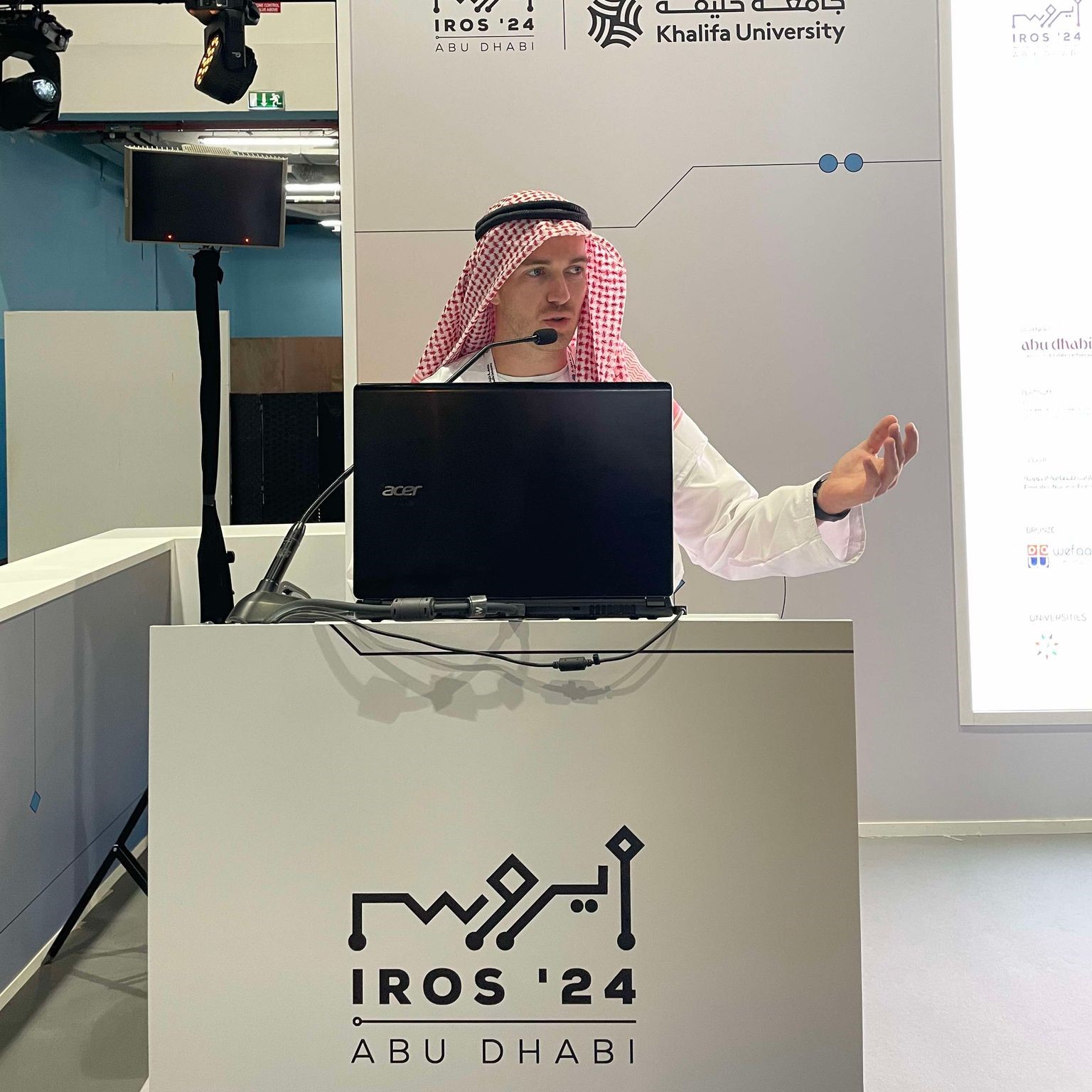Charly Péraud, PhD student since Sept. 2022
mèl : charly.peraud at univ-tln.fr
Bio
– Graduate from l’Ecole Normale Supérieure de Rennes (mechatronics department)
– Aggregation laureate in Industrial Engineering Sciences – Electrical Engineering Option since 2021
Supervision
- Cédric ANTHIERENS (Laboratoire COSMER), assistant-professor, HDR
- Vincent HUGEL, full professor, Director of COSMER Lab
PhD topic
Title : Cooperative control of an ROV (Remotely Operated Vehicle) / USV (Unmanned Surface Vehicle) system connected by umbilical.
The robotic system I’m currently working on comprises a ROV (Remotely Operated Vehicle) underwater drone, a USV (Unmanned Surface Vehicle) surface drone, an umbilical connecting the robots, and an intelligent reeling solution developed during a previous thesis (V-shaped system and reel).
This system is increasingly being studied and developed for different missions, such as area reconnaissance, underwater exploration or oceanographic measurement campaigns. The main aim of my thesis is to understand the mechanisms that enable this type of system to become fully autonomous, so as to be able to exploit them to the full.
During my first two years, I carried out an in-depth review of the state of the art, which led me to focus my research on the dynamic modeling of a cable in an underwater environment, a theme at the heart of recent work by PhD students in the laboratory. In the absence of an open-source simulator meeting the modeling constraints specific to our system, we drew on advances in research to develop a simulator that met our expectations. This simulator was enhanced by a paper submitted and presented at the “2024 IEEE/RSJ International Conference on Intelligent Robots and Systems (IROS)” in Abu-Dhabi, United Arab Emirates [1].
Using this simulator, we were able to study the dynamic behavior of our system in typical underwater mission scenarios, particularly during turning maneuvers. We highlighted that the current control of the system is not optimal, leading to the formation of lobes in the cable, which reduces the system’s maneuverability.To overcome this problem, we proposed sensory instrumentation capable of detecting the appearance of these lobes, and the results obtained were submitted and presented in the form of a paper at the “4th workshop of RObotic MAnipulation of Deformable Objects (ROMADO)” at this same edition of the IROS2024 conference [2].
I also had the opportunity to contribute scientifically, technically and editorially to work related to my thesis subject [3], [4].
[1] Charly Peraud, Martin Filliung, Cedric Anthierens, Claire Dune, Nicolas Boizot, and Vincent Hugel. IMU-based Monitoring of Buoy Ballast System through Cable Dynamics Simulation. In IEEE International Conference on Intelligent Robots and Systems (IROS), Abu-Dhabi, UAE, Octobre 2024.
[2] Charly Peraud, Cedric Anthierens and Vincent Hugel. Cable Lobe Detecton in a ROV/USV Tethered System Using IMUs and Compliant Buoy-Ballast Equipment. In 4th workshop of RObotic MAnipulation of Deformable Objects (ROMADO) : beyond traditional approaches, Abu-Dhabi, UAE, Octobre 2024.
[3] Ornella Tortorici, Charly Péraud, Cédric Anthierens, and Vincent Hugel. Automated Deployment of an Underwater Tether Equipped with a Compliant Buoy–Ballast System for Remotely Operated Vehicle Intervention. Journal of Marine Science and Engineering, 12(2):279, February 2024.
[4] Martin Filliung, Juliette Drupt, Charly Peraud, Claire Dune, Nicolas Boizot, Andrew Comport, Cedric Anthierens, and Vincent Hugel. An Augmented Catenary Model for Underwater Tethered Robots. In IEEE International Conference on Robotics and Automation (ICRA 2024), Yokohama, Japan, May 2024.
